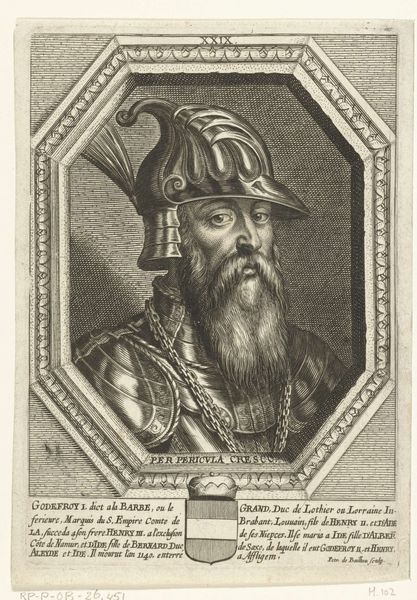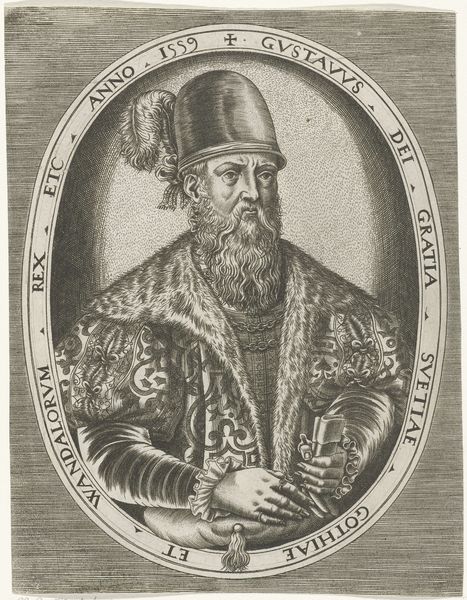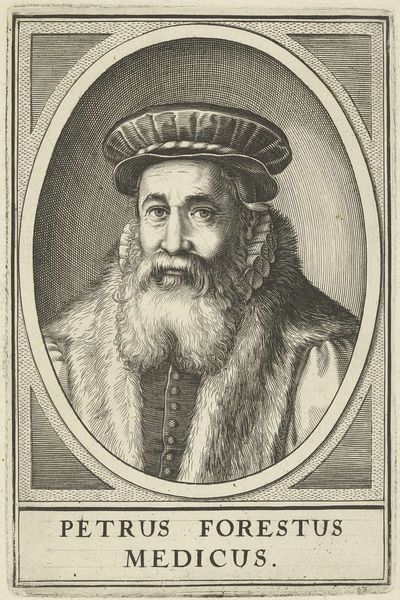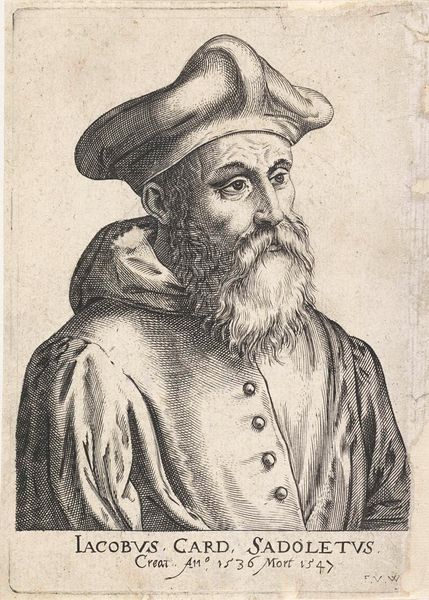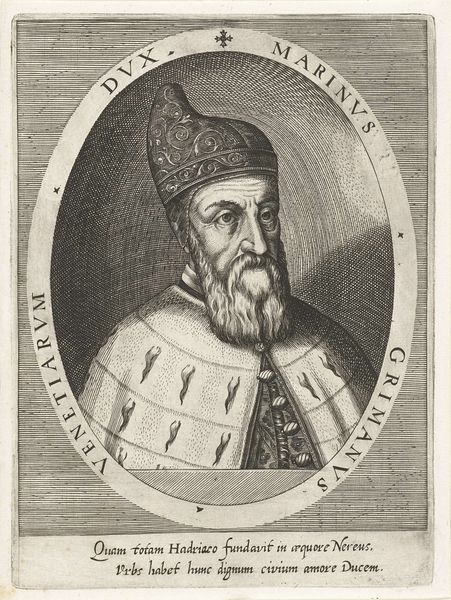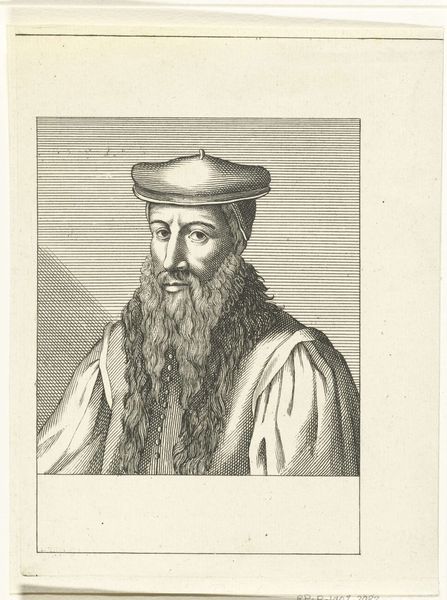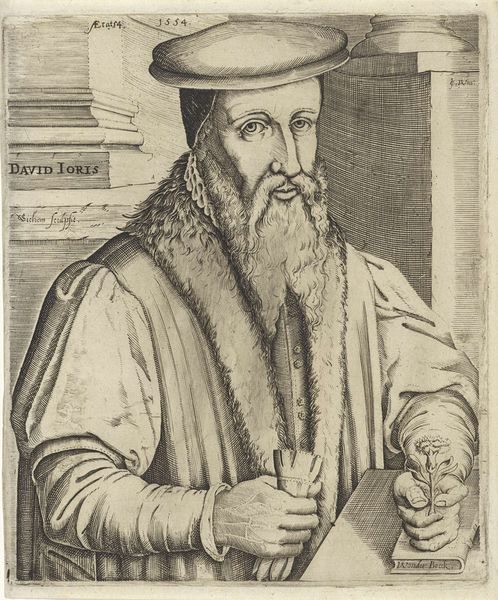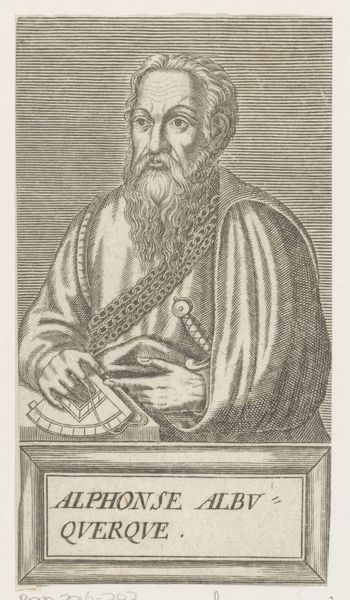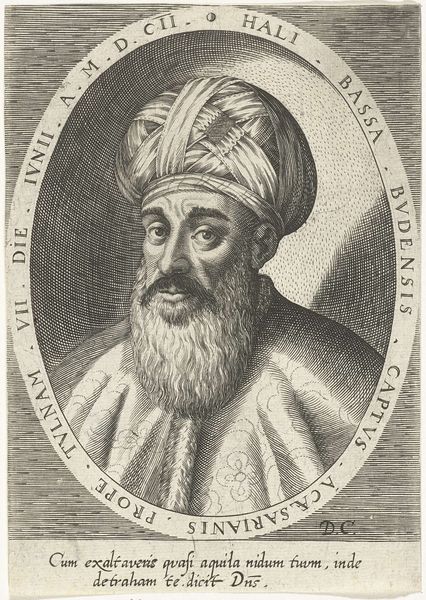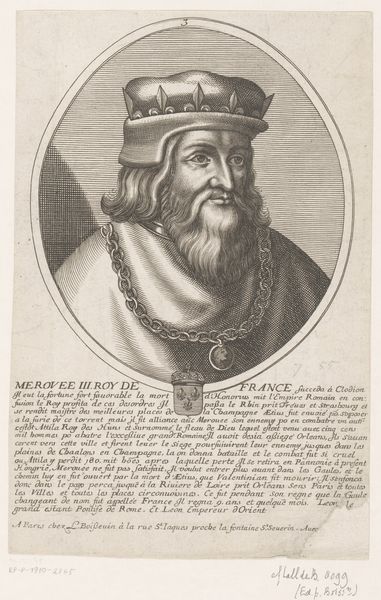
engraving
#
portrait
#
baroque
#
line
#
portrait drawing
#
history-painting
#
engraving
Dimensions: height 130 mm, width 83 mm
Copyright: Rijks Museum: Open Domain
Curator: Let’s consider this engraving hanging here at the Rijksmuseum: "Portret van Timoer Lenk", dating from between 1684 and 1743, attributed to Jan Lamsvelt. Editor: My immediate reaction is to the intensity of the line work. It’s a stark but compelling portrait. The way the lines create texture, especially in the fur hat and beard, is striking. Curator: Indeed, Lamsvelt’s technical skill with the engraving tools would have been considerable to achieve such fineness and detail, translating the nuances of Timur’s garments into print. And contextually, engravings like this had significant public function. Editor: You mean it’s not just about aesthetic appreciation; the mode of production shapes its use? Was this for wide distribution? Who was it aimed at, politically and socially? Curator: Precisely. These printed images played a crucial role in disseminating knowledge and reinforcing specific narratives about historical figures like Timur. He represented power and conquest, obviously appealing to European ideas about strong rulers. Editor: So the material is humble, just ink on paper, but it communicates something much larger than itself about the state and the ruler’s persona. Curator: Absolutely. Engravings had relative reproducibility and wide distribution that connected directly to state agendas in disseminating images that carried explicit political messaging. Consider that this portrait itself flattens details regarding the diverse Islamic artistic traditions Timur may have sponsored, sanitizing it for a specific Western audience. Editor: It seems to reveal less about Timur himself, than about 17th and 18th century European political sensibilities toward empires, leaders, power and printmaking. Curator: Yes. And the choices inherent in reproducing his image as an engraving show this. It is the visual representation of a cross-cultural power struggle played out on paper. Editor: That tension between material and message gives us a view into not only the subject but the society who wanted to keep it circulating. A stark but elegant method for control through an unassuming medium.
Comments
No comments
Be the first to comment and join the conversation on the ultimate creative platform.
